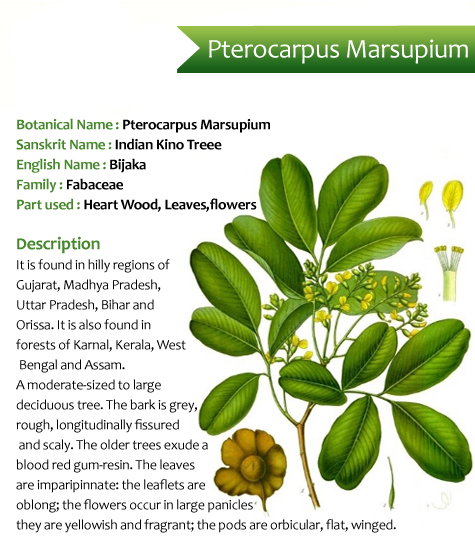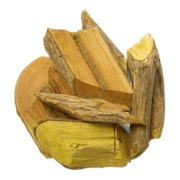DIABO BOOTI CAPSULES
For managing sugar levels
What makes Diabobooti so effective in controlling Sugar Levels?
DARUHARIDRA (BERBERIS ARISTATA)

According to International Journal for Research in Applied Sciences & Biotechnology, vol. 8, issue 2 Mar. 2021, Ethanolic extract of Daruharidra showed anti-diabetic activity. The stem extract of the plant possesses anti-hyperglycemic activity. DPP-IV inhibiting property of plant showed potential anti-diabetic agent.
VIJAYSAR (PTEROCARPUS MARSUPIUM)
 According to Medicinal Plant Research 2015, vol. 5, no. 3, Pterostilbene , Marsupin and Pterosupin, the three compounds present in P. Marsupium possess anti-diabetic properties. Marsupin and pterostilbene significantly lower the blood glucose levels and show a significant reduction in glycosylated Hb.
According to Medicinal Plant Research 2015, vol. 5, no. 3, Pterostilbene , Marsupin and Pterosupin, the three compounds present in P. Marsupium possess anti-diabetic properties. Marsupin and pterostilbene significantly lower the blood glucose levels and show a significant reduction in glycosylated Hb.KEUKAND (COSTUS SPECIOSUS)
Der Pharmacia Sinica, 2011, 2(1); 118-128 states that Aqueous extract & methanolic extracts of Keukand are highly effective in bringing down the blood glucose levels. Its root extract possesses anti-hyperglycemic, anti-hyperlipidemic & antioxidative effects, which are helpful in the management of diabetes and its complications.
KARANJA (PONGAMIA PINNATA)
IJPSR, 2011; VOL. 2(3): 494-500 observed that oral administration of ethanolic extract of Karanja shows significant anti-hyperglycemic effect and enhancement in the antioxidant defense system.
BABOOL (ACACIA ARABICA)
Phenolic compounds present in Babool extracts significantly reduced blood glucose levels, cholesterol, and triglycerides. Histological studies of the beta cells show its action on the pancreas according to Int. Res. J. Medical Sci. vol.2(5), 20-24, May 2014.
KARELA (MOMORDICA CHARANTIA)
Karela extracts and isolated components exert their hypoglycemic effects via different physiological and biochemical processes. Oral administration of Karela could lead to the secretion of insulin from endocrine pancreatic beta cells. Charantin, polypeptide-p, and vicine are major compounds isolated from M. charantia which show potential anti-diabetic properties, states Asian Pac J Trop Dis 2013 ; 3(2): 93-102.
KHADIRA (ACACIA CATECHU)
The anti-diabetic activity of the plant extracts of Khadira was shown via the reduction of enzymatic activities of alpha-glucosidase, alpha-amylase, and aldose-reductase. Administration of ethanolic extracts of Khedira shows improvement in glucose tolerance according to Hindawi Journal of Chemistry; vol.2021, article ID 2575598.
GUDMAR (GYMNEMA SYLVESTRE)
The herb possesses anti-diabetic effects and sugar inactivation properties. The presence of triterpene saponins known as gymnemic acid, gymnemasaponins, and german account for its hypoglycemic effects according to Biomed Research International vol. 2014; article ID 830285.
MANJISHTHA (RUBIA CORDIFOLIA)
Ethanolic extracts of roots of R. cordifolia are reported to be hypoglycemic. The beneficial effect of treatment might be due to different types of active principles each with a single or diverse range of biological activities according to Oriental Pharmacy and Experimental Medicine 2009, 9(1), 1-13.
METHI BEEJ (TRIGONELLA FOENUM GRAECUM)
Methi seeds have been shown to have hypoglycemic effects on type 1 & type 2 diabetes mellitus patients. Ethanolic extracts of methi seed powder decrease blood glucose, serum cholesterol, and SGOT & SGPT levels. Raw and germinated seeds significantly reduce postprandial glucose levels according to IJASR; vol.5; issue 05; 2019.
SHILAJIT
Long-term treatment with Shilajit increases the number of beta cells of the pancreas which may result in better sensitivity of pancreatic beta cells with the prompt secretion of a large quantity of insulin in response to hyperglycemia according to Indian J Pharmacol; Dec.2004, vol.36, issue 6.
BLACK PEPPER (PIPER NIGRUM)
P. Nigrum shows anti-diabetic activity in addition to the anti-oxidant activity which can help overcome the stress created by the hyperglycemic condition of the cells according to IOSR-JPBS; vol. 13; issue 2 ver. II MAR.-APR. 2018, 53-56.
LAL CHANDAN (PTEROCARPUS SANTALINUS)
Aqueous, ethanol and hexane bark extracts of P. Santalinus proved to be anti-hyperglycemic. The hypoglycemic effect was attributed due to the phytoconstituents beta-sitosterol, epicatechin, and lupeol which activated remnant beta cells, and improved insulin response at cellular levels (Asian J Pharm Clin Res. , vol. 15, issue 1, 2022)
ANJANI (MEMECYLON UMBELLATUM)
Oral administration of alcoholic extracts of the leaves of M. umbellatum shows a significant lowering of serum glucose levels according to Journal of Ethnopharmacology, vol.62, issue 3, Oct. 1998.







